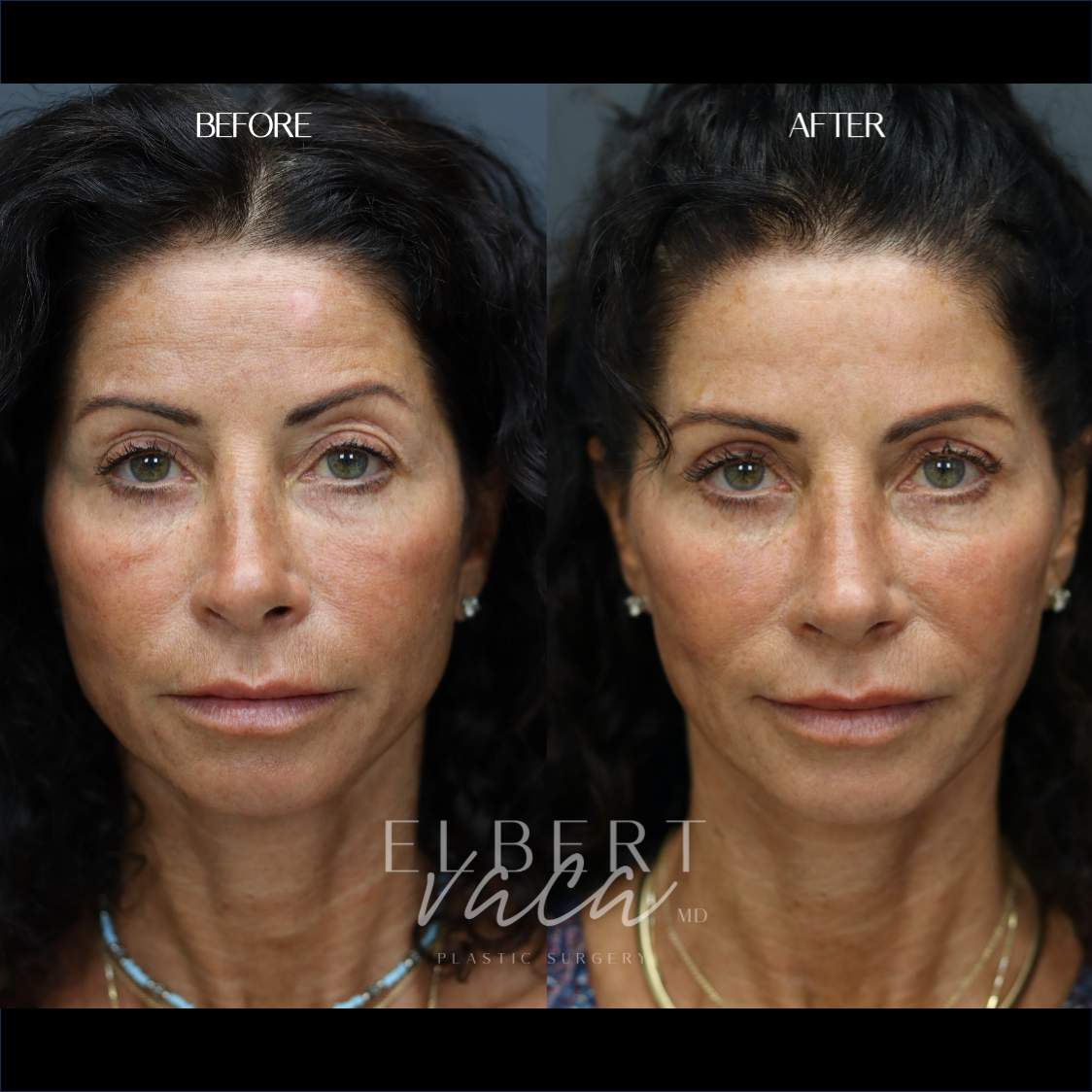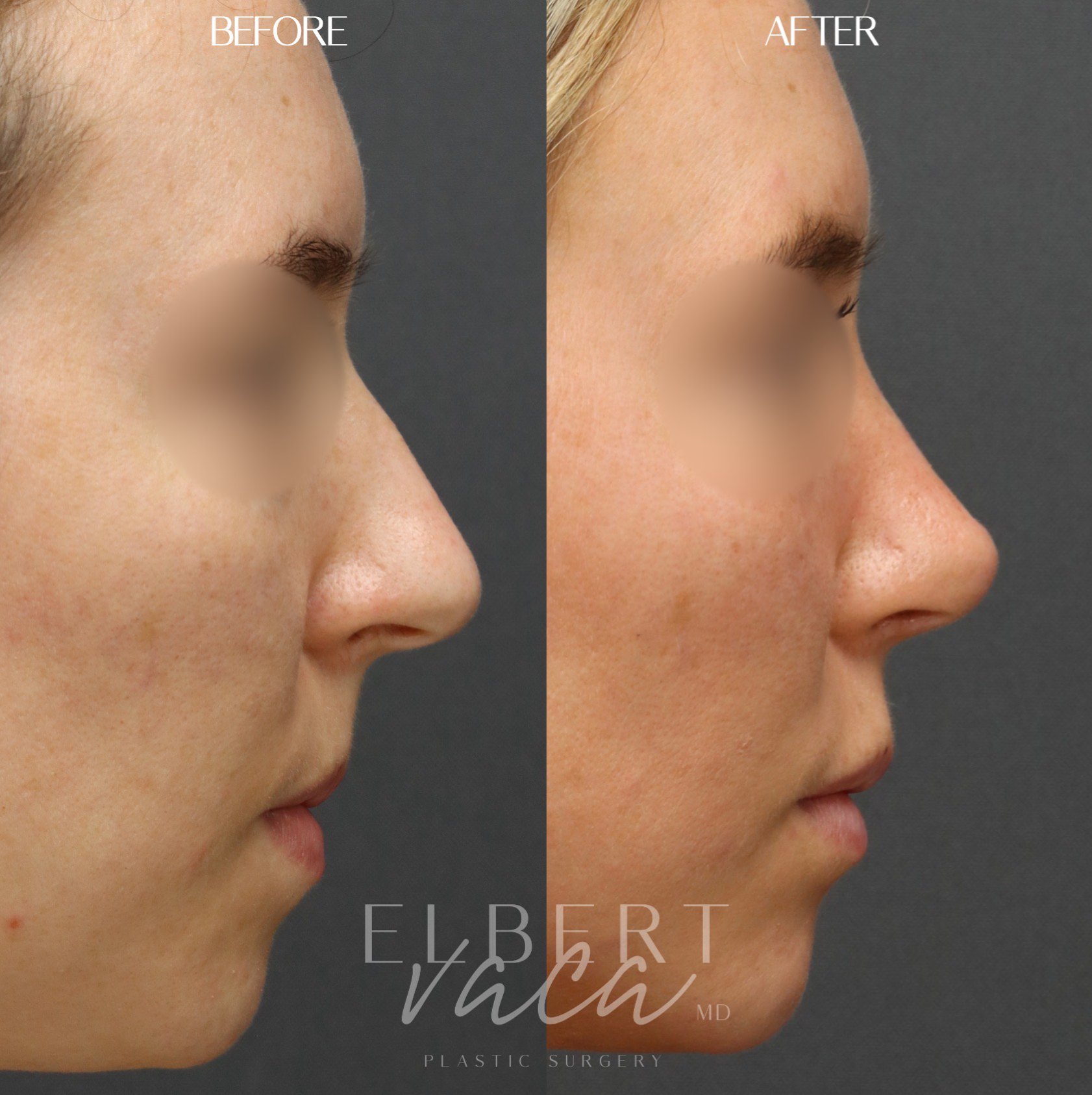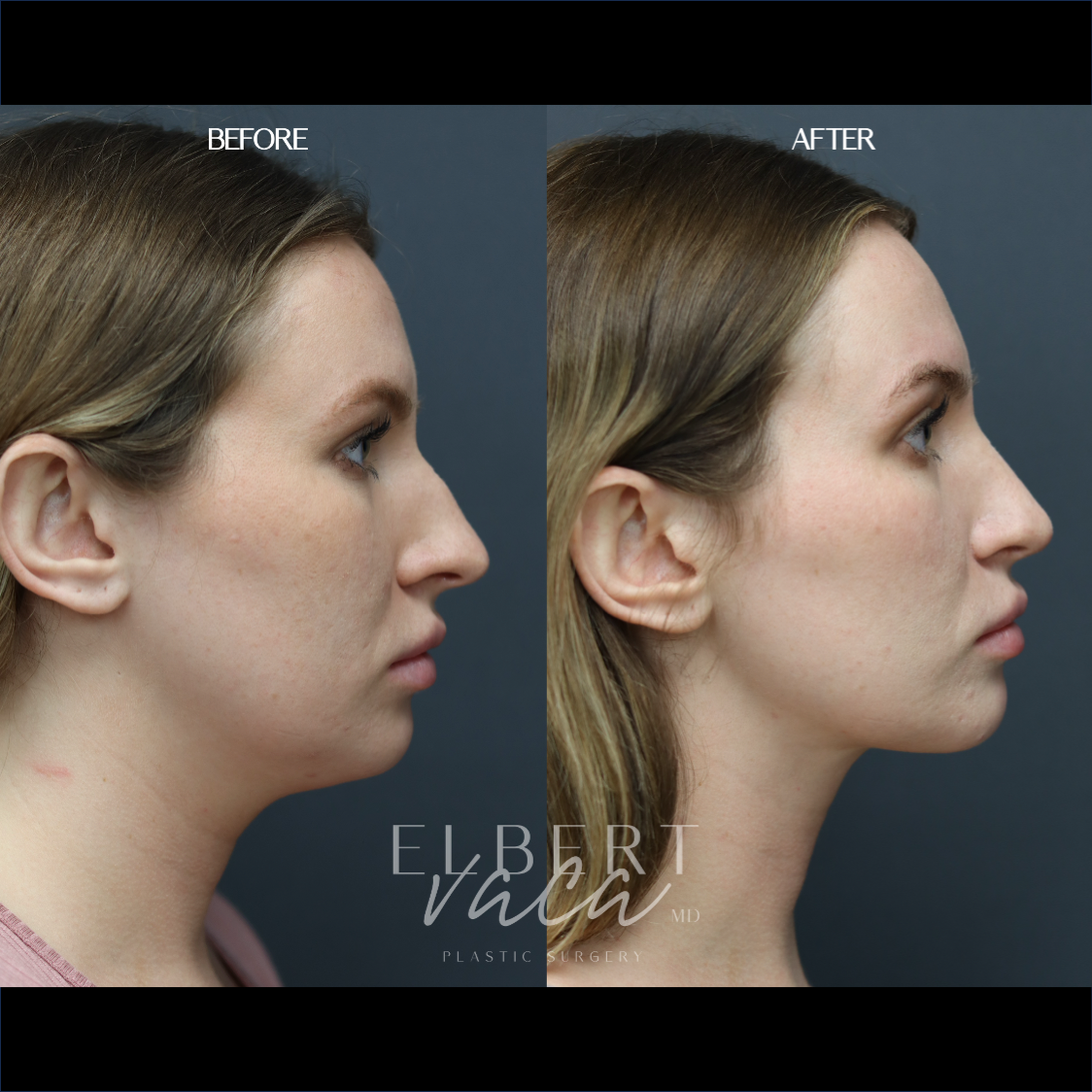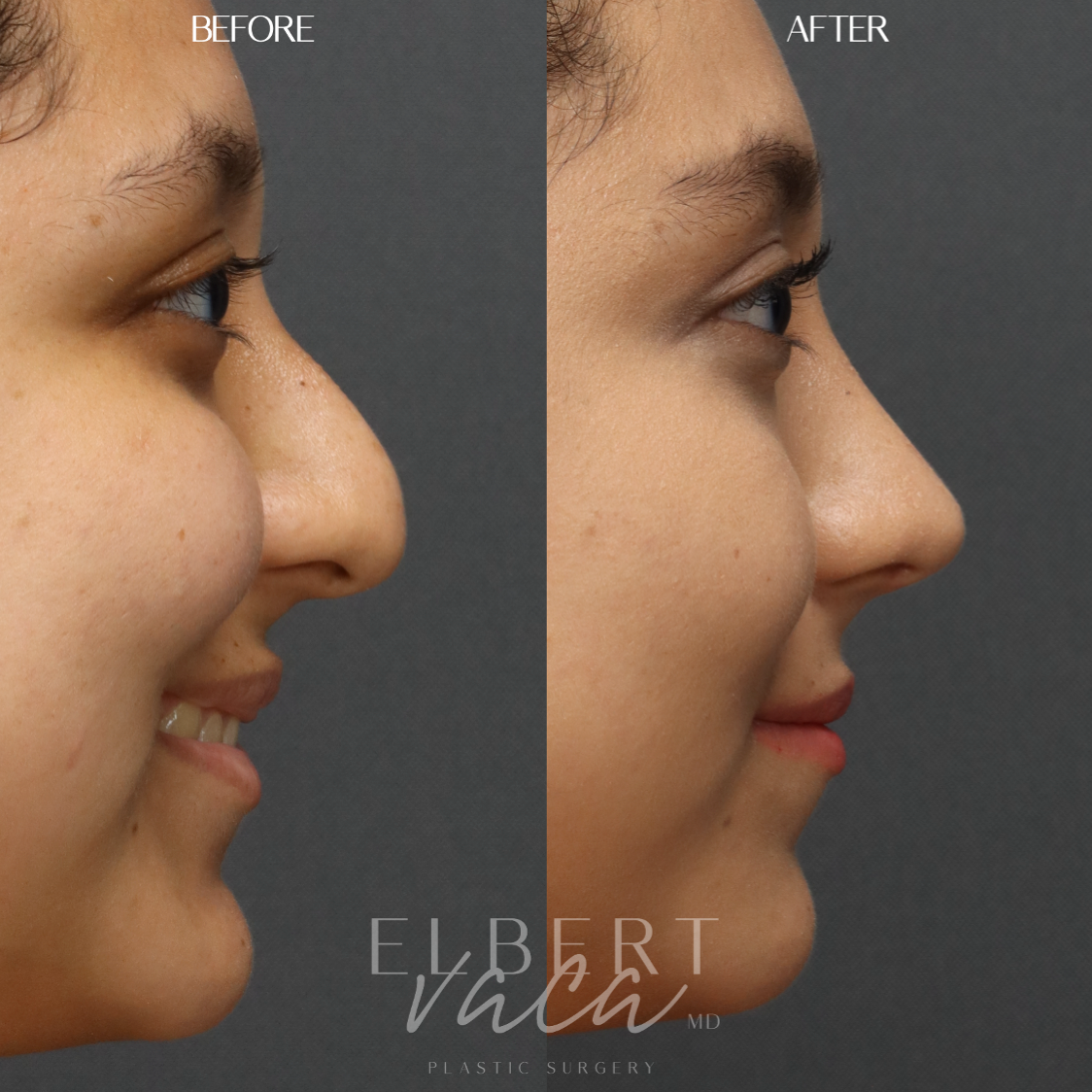Your nose should complement and enhance, not distract from your otherwise beautiful facial features. A rhinoplasty or “nose job” can significantly enhance the appearance and function of your nose. A rhinoplasty can help improve:
Altering the shape of your nose can help create aesthetic balance and harmony with the rest of your face.
Poor structure of the nose or deviations of the nasal septum can cause difficulty breathing. A rhinoplasty can help correct this and significantly improve breathing and a patient’s quality of life.
Rhinoplasty is one of the most complex procedures in plastic surgery and requires thorough aesthetic evaluation and meticulous surgical planning and execution. There are many surgical techniques that can be used; most importantly, it must be customized to each patient’s needs and goals.






Depending on the patient’s individual concerns and potential breathing issues, the nasal bones may need to be reshaped to straighten the nose, to decrease the width of the nose, or to reconstruct the bridge of the nose if a significant nasal hump is reduced.
“Breaking” the nasal bones is a harsh term. If indicated, the nasal bones are precisely cut, shaped and repositioned to optimize the aesthetic and functional outcome of surgery.
The need for using a patient’s rib cartilage is quite rare. Cartilage from the nose itself (typically the septum) is used to help improve the shape of the nose during rhinoplasty – this means that no additional incisions are required on other areas of the body.
Ear cartilage is very rarely used because ear cartilage is curved and unfortunately not useful to help straighten a nose.
Occasionally, and more commonly with revision rhinoplasty, cadaveric rib cartilage may be used to help straighten and improve the shape of the nose. Cadaveric cartilage has a strong track record of safety and longevity. The benefit of using cadaveric cartilage is that it avoids having to harvest the patient’s own rib cartilage and the associated scar, it decreases the length of surgery, and decreases pain and discomfort after surgery.
All surgical procedures carry a degree of uncertainty and risk. Thankfully, the risk of any major complication is rare.
Rhinoplasty incisions typically heal very well. Infection and bleeding are rare but can occur. It is important to avoid strenuous activity, blood thinning medications, and that your blood pressure is well controlled after surgery to decrease the risk of bleeding.
We all have natural asymmetries between each side of our nose and face – some people more than others. After a rhinoplasty, some asymmetries will still exist.
Occasionally, another procedure may be needed to make adjustments to the nose. If this is required, this is usually done at least 1 year after surgery.